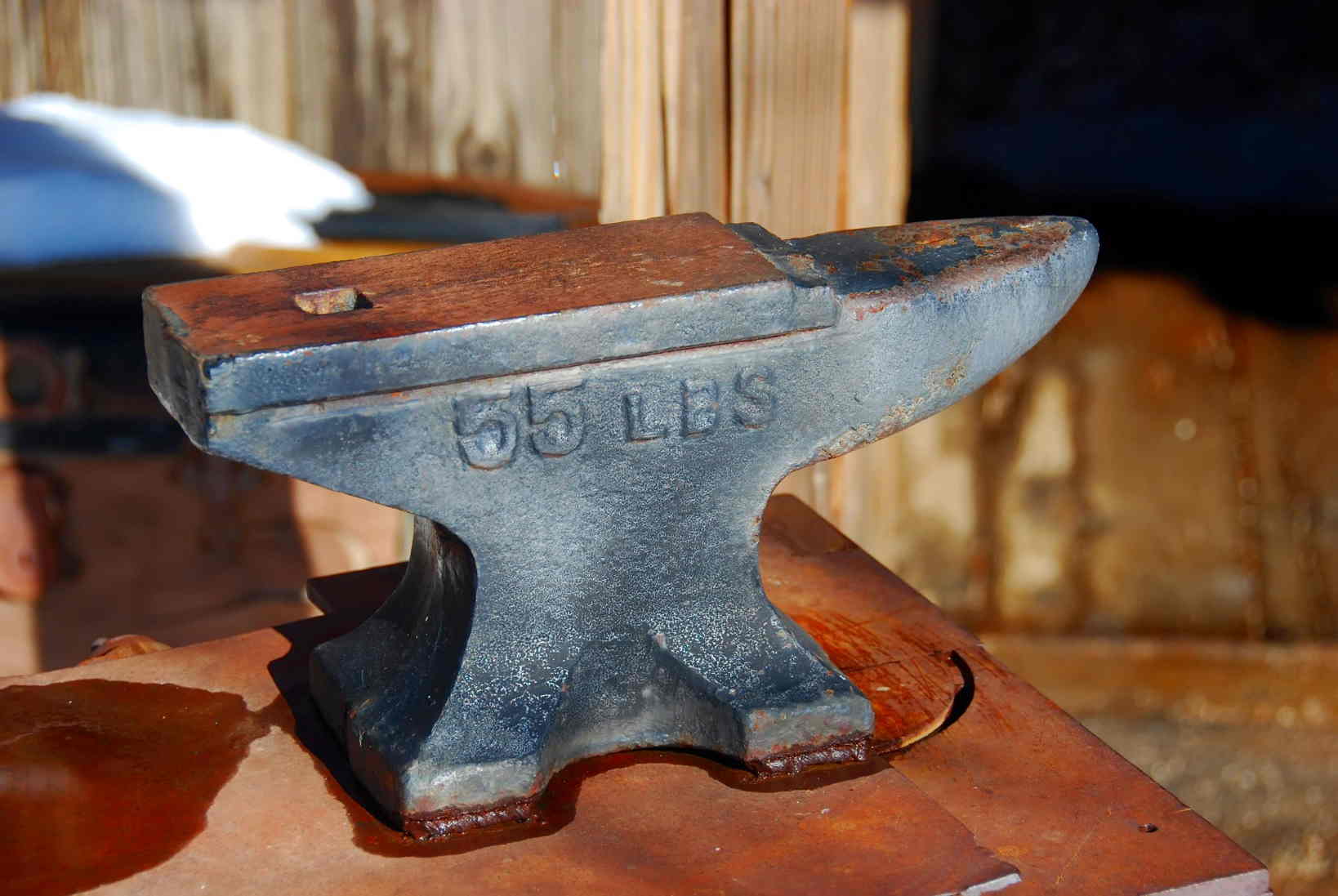
These numbers represent the weight of the anvil. Anvils made in more modern times are marked in lbs or kg.
Not too exciting right?
Well, it gets more interesting when you start looking at older anvils, particularly in America. For a good portion of American history, we imported our wrought iron anvils from England. These imported English anvils used a different system of weights known as the “stone” system of weight.
A stone is equal to 14 pounds.
Eight stones is known as a “hundredweight”, which is 112 pounds. A hundredweight is sometimes written as “cwt”.
How to read an anvil measured in stone weight
With the anvil horn pointed right, these numbers are usually written on the face of the anvil. To read these weights, you will do 2 multiplications, add the totals of these two multiplications, and then add the final number to the right. It’s easier than it sounds, so I will walk your through an example.
Example: 2 2 9
The first number indicated the number of hundredweights (112lb). So a 2 in this position would equal 2 x 112 = 224 pounds. Anvils that weigh less than 112 pounds will have a 0 in this position – with some exceptions; there are some really old anvils that were made before 1700 that have no number in this position when the anvil weighed less than 112 pounds.
Just as the left number is a multiple of the number 112, the center number is a multiple of 28. 28 is a quarter of a hundredweight. This number will be a 0,1,2 or 3. It does not go over 3. So a 2 in this position would equal to 28 * 2 = 56lb.
The right number represents any weight under a quarter weight. So you will find a number between 0 and 27 in this position. You don’t have to do any multiplication for this number. In our example above it is 9.
To get the total weight, add 224+56+9= 289lbs.
In expanded form, it’s ( 2 x 112 ) + ( 28 * 2 ) + (9). You don’t need the parenthesis, I added them because I thought it made it easier to understand.
Some anvils will have a period or dot punched between the numbers.
On colonial anvils made before the 1800’s, these numbers were cut with a chisel. Some of these anvils had dots punched between the digits, others did not.
Number punches came into use during the late 1800’s, and these gradually replaced the chisel method of writing the numbers.
While the stone weight system was the most common system used on anvils imported to America from England, not ALL of these anvils use it. There are examples of English anvils using pounds, although it’s not common.
Brooks anvils
Brooks anvils are unusual in that many of their models use a slight variation of the stone weight system described above. Take for example a 500lb anvil.
In the traditional stone weight system, this would be marked as 4 1 24.
Brooks anvils would instead be marked 4 1/2. Roughly read as 4 and one half hundredweights.
Accuracy Of These Numbers
Modern anvils are usually made within 10% of the advertised weight. There is way more variation away from the advertised weight than I would like…with the companies usually delivering anvils lighter than advertised. Which is a shame, as modern manufacturing techniques give the company a great deal of control over how heavy the anvil will be.
Older anvils usually sold pretty close to their inscribed weight, often within a pound or two. The problem is that these anvils are so old, that they tend to shed weight through rust, use, and abuse. Meaning an old anvil will often come well under the weight written on its side.
You really won’t find too many anvils that come in over their advertised weight.
That’s about it. The numbers on the face of the anvil usually represent its weight. This weight is sometimes given in stone weight. There can be a lot of subtle variations of these markings depending on the make/model/year it was made. If you are interested in buying an anvil for youself, check out my guide to buying blacksmithing anvils.
credit for title photo goes to Matthew Dillon on flickr.